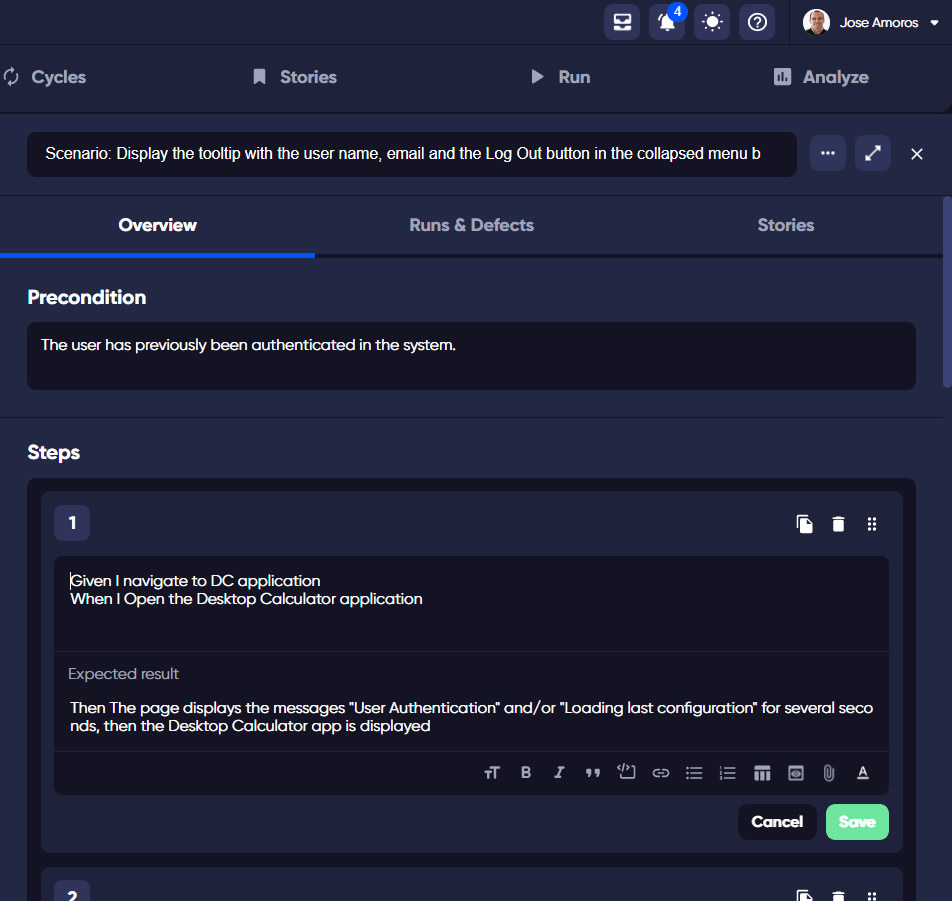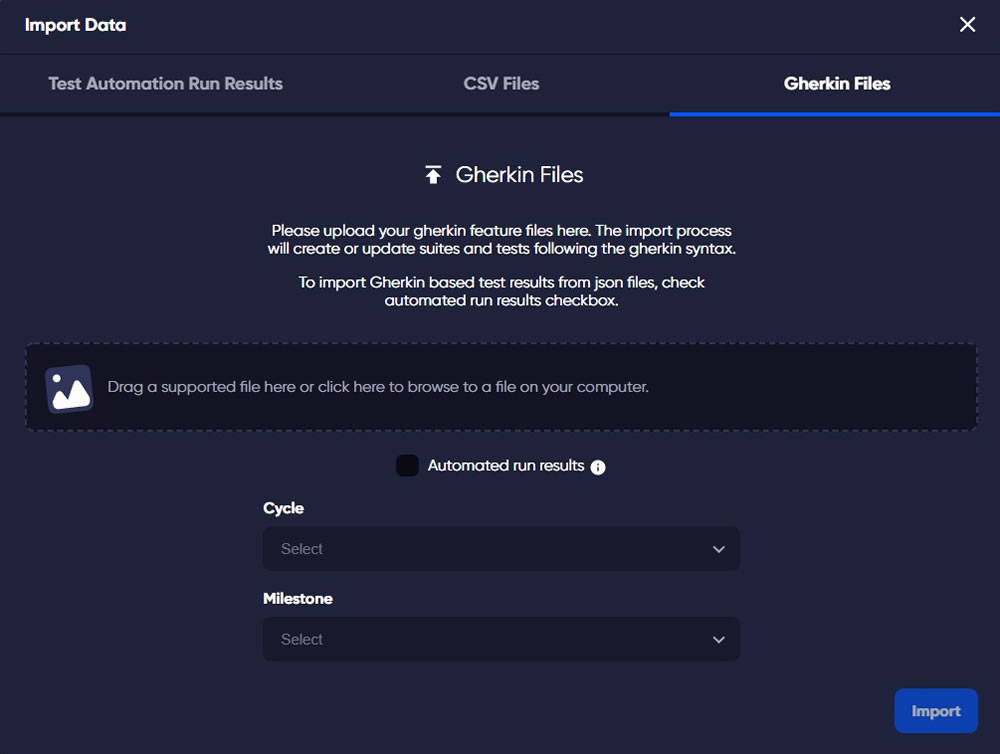As software development projects become more complex, the need for effective testing tools and methodologies becomes increasingly important. One such methodology that has gained popularity in recent years is behavior-driven development (BDD).
Behaviour Driven Development, orBDD, is a software development methodology that emphasizes collaboration and communication between developers, testers, and business stakeholders. BDD is an extension of Test Driven Development (TDD) that places greater emphasis on defining requirements in a way that is easily understandable by all parties involved in the development process. In this blog post, we will explore what BDD is, how it works, and how it can be implemented using TestQuality, a leading and powerful test management tool.
What is Behavior Driven Development (BDD)?
Behavior-driven development is a software development methodology that focuses on defining and testing the behavior of a software application, rather than just its functionality. BDD is a collaborative approach that involves stakeholders, developers, and testers, working together to define the requirements and acceptance criteria for a given feature or piece of functionality.
>> What Is Gherkin & How Do You Write Gherkin Tests?
BDD starts with the definition of a business requirement in plain language using a domain-specific language (DSL) that is understandable by all stakeholders involved in the project. This plain language description is then used to create automated tests that verify the application's behavior against the stated requirements.
BDD is a relatively new methodology that has gained popularity in recent years, thanks to its ability to promote communication and collaboration across teams. BDD is a natural evolution of Test Driven Development (TDD) and Acceptance Test Driven Development (ATDD).
BDD involves writing tests in a way that is easily readable and understandable by all parties involved in the development process. This is achieved by using a natural language syntax that is easy to read and understand. BDD tests are often written in a Given-When-Then format, which describes the user stories and scenarios, the preconditions, actions and expected results of a particular feature or functionality.

BDD Testing Process
BDD testing is a process that starts with the definition of user stories, which describe the behavior of a feature from the user's perspective. Each user story is broken down into scenarios, which are specific examples of how the feature should behave under different conditions. These scenarios are then used to create automated tests using a BDD testing framework, such as such as Cucumber or SpecFlow, Codeception or JBehave.
BDD testing is an iterative process that involves continuous collaboration between developers, testers, and business stakeholders. Testers and developers work together to create automated tests for each scenario, using a BDD testing framework. BDD tests are designed to be easily readable and understandable by all mentioned parties involved in the development process,
BDD tests are typically written using a test automation framework, which allow BDD tests to be written in a natural language syntax that is easy to read and understand. This language is called Gherkin, and it uses in its syntax a set of keywords to describe different types of behavior. The most common keywords used in Gherkin include Given, When, Then, And, and But. In a previous post, we showed some Cucumber and Gherkin best practices to make your Gherkin Syntax better.
Given is used to describe the preconditions for a test scenario. For example, Given a user is logged in. When is used to describe the action being tested. For example, When the user clicks the submit button. Then is used to describe the expected outcome of the test scenario. For example, Then the user should see a confirmation message.

TestQuality's Test Drawer offers the great advantages of a Rich-Text Markdown Editor when creating Test Steps.
BDD tests can also be integrated with other testing tools, such as Selenium, to automate the testing process.
BDD is built on three key principles: collaboration, automation, and a focus on delivering value to the end-user. By emphasizing collaboration among team members and knowing that Test Automation is the most effective technique to improve software testing effectiveness, BDD helps to ensure that software meets the needs of the end-user and is delivered on time and within budget.
BDD places an emphasis on behavior rather than implementation. It is a process that focuses on defining the desired behavior of the software from the perspective of the end-user. This behavior is captured in the form of automated tests, which are written in a domain-specific language that is easily understood by both technical and non-technical stakeholders.
BDD encourages a collaborative approach to software development. It brings together developers, testers, and business stakeholders to define the desired behavior of the software and to ensure that it meets the needs of the end-user. This collaborative approach helps to reduce the risk of miscommunication and ensures that everyone is working towards a common goal.
BDD Scenario Recommendations
Following BDD Scenario best practices may help you deliver high-quality test automation scripts.
- Instead of focusing on UI/UX tasks, scenarios should focus on actual functionality.
- "Given" "When" "Then" should all fall into the proper order.
- For "Given" clauses, use the past tense; for "When" and "Then," use the present and future tenses, respectively.
- In a scenario, each "When" clause would refer directly to the intended outcome of the test.
- It is possible to combine many instances of "Given" and "Then" by using the "And" clause.
- The "Before" hook should be used if the necessary procedures are more technical in nature.
- Tagging is essential for selecting tests for various execution modes.
- Rather of using imperative phrases, try using declarative ones.
- Connect the assertions together to make the code easier to understand.
The BDD process is typically broken down into four stages: discovery, formulation, automation, and evolution.
Discovery
In the discovery phase, the development team works with business stakeholders to identify the needs and requirements of the end-user. This typically involves brainstorming sessions, user interviews, and other techniques to gain a deep understanding of the user's needs and how they interact with the software.
Formulation
In the formulation phase, the development team uses the information gathered in the discovery phase to write user stories that describe the behavior of the software from the perspective of the end-user. These user stories are written in a domain-specific language that is easily understood by both technical and non-technical stakeholders.
Automation
In the automation phase, the development team uses a testing framework, such as Cucumber or SpecFlow, to automate the user stories written in the formulation phase. These tests are written in the same domain-specific language as the user stories and are easily understood by both technical and non-technical stakeholders.
Evolution:
The fourth and final stage of BDD is evolution. During this stage, the team continuously reviews and updates the tests to ensure that they remain relevant and accurate. The team also uses feedback from the end-user to make improvements to the software and its behavior. This stage is critical because it helps to ensure that the software meets the changing needs of the end-user and that it remains flexible enough to adapt to changing requirements
In summary, the four stages of BDD - discovery, formulation, automation, and evolution - are critical to the success of the BDD process. By breaking down the process into these stages, the team can collaborate effectively, define the behavior of the system, translate that behavior into automated tests, automate the tests, and continuously review and update the tests to ensure that the software meets the needs of the end-user.
Benefits of Behaviour Driven Development
There are many benefits to using BDD as a software development methodology. Some of the key benefits include:
- Collaboration and Communication: BDD promotes collaboration and communication among developers, testers, and business stakeholders. This helps to ensure that everyone is working towards a common goal and that the software meets the needs of the end-user.
- Greater Test Coverage: BDD tests are designed to cover all aspects of the software's behavior from the perspective of the end-user. This helps to ensure that the software meets the needs of the end-user and that it behaves as expected in different scenarios.
- Automated Testing: BDD tests are automated, which means that they can be run quickly and easily. This helps to reduce the time and effort required for testing, and it also helps to ensure that the software is tested thoroughly.
- Early Detection of Issues: BDD tests are designed to be run early and often, which means that issues can be detected and addressed early in the development process. This helps to reduce the risk of issues being discovered late in the development process when they are more difficult and expensive to fix.
- Improved Quality: BDD tests help to ensure that the software meets the needs of the end-user and that it behaves as expected in different scenarios. This helps to improve the quality of the software and reduces the risk of defects and issues.
BDD Test Management with TestQuality
TestQuality is a powerful test management tool that can be used to manage BDD tests.
TestQuality's import capabilities also allow you to import requirements, tests, and issues by uploading Gherkin Feature Files easily with an import data option menu even when using a Gherkin based Test results JSON file.
Gherkin feature files can be uploaded via TestQuality REST interface via curl, a popular command line tool.
Once your file has been added, you can optionally choose a Cycle and Milestone that you would like to link to your Test Run result.

Gherkin Feature Files with your tests can be easily imported with TestQuality
TestQuality provides a range of features and capabilities that are designed to support the BDD development process, including:
- Test Case Management: TestQuality provides a centralized repository for managing BDD test cases. BDD test cases can be easily created, edited, and managed using the TestQuality web interface. TestQuality also provides support for importing BDD test cases from other sources, such as Excel spreadsheets or JIRA.
- Test Execution Management: TestQuality provides support for managing BDD test executions. BDD tests can be executed manually or automatically using TestQuality's built-in test automation capabilities. TestQuality also provides support for tracking test results and generating test reports.
- Team Collaboration: TestQuality provides support for collaboration between developers, testers, and business stakeholders. BDD tests can be easily shared and discussed using TestQuality's built-in collaboration features such as shared filters.
- Integrations: TestQuality provides support for integrating with a range of other tools and systems. TestQuality can be integrated with CI/CD systems, such as Jenkins or Travis CI, to automate the testing process. TestQuality can also be integrated with bug tracking systems, such as JIRA or GitHub, to facilitate bug tracking and defect resolution.
- Real Time Analisys: TestQuality provides support for generating test reports that can help identify the quality and effectiveness of your test cases, test runs, cycles or any of your testing efforts to ensure you're building and executing the most effective tests for your software testing needs.
TestQuality is designed around a live integration core that allows TQ to communicate directly with GitHub and integrate with Jira in real-time to link issues and requirements with the key tools in your DevOps workflows.
Join now and Try TestQuality for Free!
Conclusion
In conclusion, Behavior Driven Development is a powerful methodology for software development that emphasizes collaboration and communication among teams. BDD testing, using the Gherkin language, helps to ensure that software meets the needs of the end-user and behaves as expected in different scenarios. TestQuality is a great tool for managing BDD tests and ensuring that your software meets the highest standards of quality.






